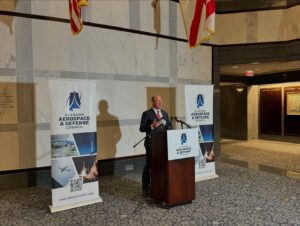Bah Humbug! Ethics rulings hamstring Alabama charities, just in time for Christmas

It is Christmastime, and since Alabama is one of the most charitable states in the nation, I would expect that many of us are in the giving mood and plan to help many worthy causes across our great state. Unfortunately, it appears that some recent rulings by the Alabama Ethics Commission are going to make it more difficult for charities across the state to raise the funds that they need to serve our communities. Many charities in Alabama are concerned that an unintended consequence of recent Commission interpretations of the ethics law is that it could restrict the ability of public officials and employees and their family members to be involved in fundraising for charities and other organizations that they support, including public schools and universities. You may not be aware, but there are over 300,000 public officials and employees at the state and local level who are covered by Alabama’s ethics law. Many of these individuals are leaders in their communities, who are appointed to positions of public responsibility such as school boards and water boards. Not surprisingly, these same individuals are often also involved in supporting a number of worthy causes and charities by helping with their fundraising and serving on their boards. The problem is, over the past year or so, in an effort to implement what they seem to believe the law requires, the Ethics Commission has issued guidance that places restrictions on the ability of public officials and employees to help charities by seeking donations from various individuals, businesses, and organizations. While their intentions are no doubt good, the broad language of these rulings has caused major issues for charities across the state. This is because a number of those charities rely on individuals, who happen to be part-time members of public boards who are covered by these ethics laws. As a result, charities are asking anyone involved in a public body not to fundraise for them no matter how much they have done so in the past. I do not expect that anyone was thinking about these situations when they amended the ethics laws back in 2010, but it appears that this is another one of those unintended consequences of a well-intentioned law. To make matters worse, under the Commission’s interpretations of these laws, the restrictions on charity fundraising also seem to apply to the family members of these 300,000 public servants who are raising money for a charity. This means that these rulings affect the ability of many more Alabamians. There are probably close to one million folks who help raise money for the charities that they support. Hopefully, the Commission will clear up this confusion. However, if they do not, I expect that the outcry will be so great that the Legislature will take action. Remember that this is not the first time we have had problems with broad interpretations of the ethics laws at Christmastime. Back in December 2011, you may recall, the Ethics Commission issued rulings that raised a lot of questions and concerns about the ability of public school teachers to accept Christmas gifts from students under these same ethics laws. The concerns arose then because of some of the changes to the law that had gone into effect earlier in 2011. The Commission’s rulings in 2011 did not, in the end, clear things up very much for students and their teachers in time for Christmas. However, in the following legislative session in 2012, the Legislature amended the ethics law to make it easier for students to give Christmas gifts to public school teachers and coaches. The legislative fix was needed to address an unintended consequence of the law. I think we are all hoping this current problem for charitable fundraising is resolved by the Ethics Commission in time for Christmas. We do not need our charities and other worthy causes to suffer an unintended consequence of a well-intentioned law. See you next week. ___ Steve Flowers is Alabama’s leading political columnist. His weekly column appears in over 60 Alabama newspapers. He served 16 years in the state legislature. Steve may be reached at www.steveflowers.us.
Playoff pairs: Unbeaten Alabama to face Washington, Ohio State against Clemson
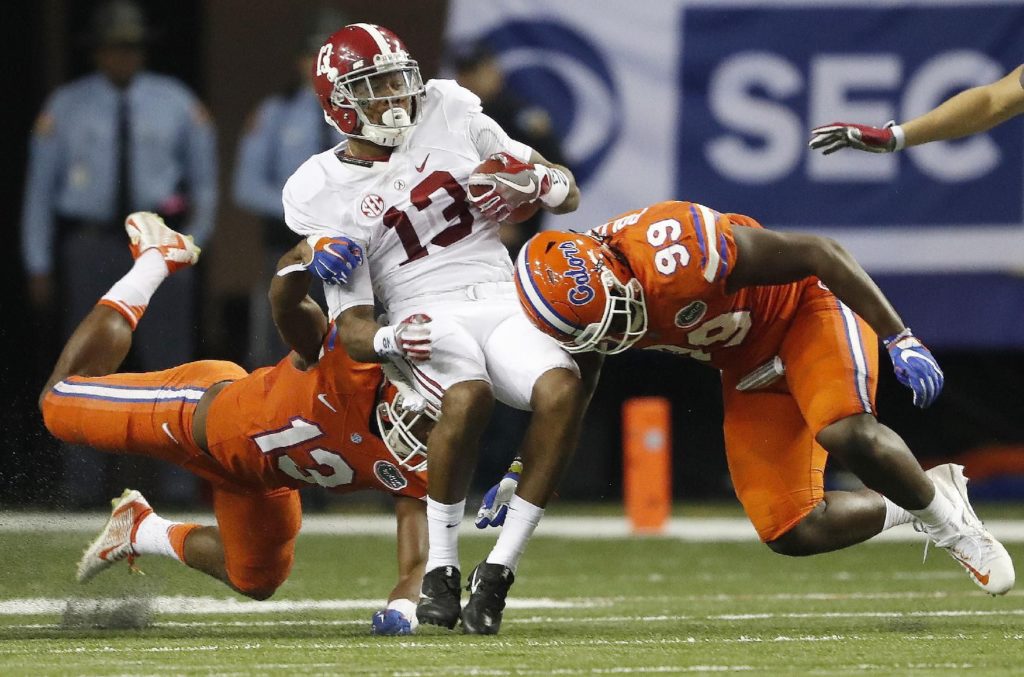
In the end, true chaos never came to college football this season. Four teams that started near the top of the College Football Playoff rankings will play for the national championship. Alabama will face Washington in one semifinal and Clemson meets Ohio State in the other. None of them were ranked any lower than sixth since the selection committee started ranking teams in early November. Even after a wild finish to championship Saturday, selection Sunday went pretty much as expected. The committee stayed with the same top four it picked going into championship weekend, leaving out No. 5 Penn State even though the Nittany Lions won the Big Ten title game and beat Ohio State earlier in the season. The Buckeyes (11-1) are the first team to reach the playoff in its three-year history without winning their conference. The unbeaten Crimson Tide (13-0) is in the playoff for the third straight season and is the top seed for the second time. They will play the fourth-ranked Huskies (12-1) in the Peach Bowl in Atlanta on Dec. 31. Kickoff is set for 3 p.m. ET. Alabama has played Washington four times previously, twice in bowls and not since 1986. Huskies fans were holding up signs at games late in the season, proclaiming “We want Bama.” “Sometimes you got to be careful what you wish for,” Washington coach Chris Petersen said on ESPN. “I didn’t hold up that sign.” Saban and Alabama will be trying to win their fifth national championship in eight seasons, and second straight. Washington’s last national title came in 1991, when the Huskies were No. 1 in the final coaches’ poll. Petersen, the former Boise State coach in his third season with Washington, has never faced Saban and said he does not know him well. “I feel like I know him, I see him on TV so much,” Petersen said. No. 3 Ohio State is making its second playoff appearance and No. 2 Clemson (12-1) is in for the second consecutive season. The Buckeyes and Tigers will meet at the Fiesta Bowl in Glendale, Arizona, on Dec. 31. Kickoff is set for 7 p.m. ET. Ohio State won the first College Football Playoff after the 2014 season and Clemson lost to Alabama in last season’s championship game. Ohio State and Clemson have played twice before, both in bowl games. The last time was after the 2013 season. The one difference from last week’s top four and the final one was Clemson and Ohio State switched spots. So the Tigers will wear the home jerseys in University of Phoenix stadium instead of the Buckeyes. Selection committee chairman Kirby Hocutt said the decision came down not to Penn State and Ohio State, but the Nittany Lions (11-2) and Pac-12 champion Washington. The Huskies’ only loss was to Southern California and its nonconference schedule featured FCS Portland State, Rutgers and Idaho. Penn State played Pitt, Temple and Kent State in the conference and lost to the Panthers. The Nittany Lions also were beaten by 39 at Michigan in their last loss. Penn State finished the season on a nine-game winning streak to make a strong closing statement. “Had Washington had a stronger strength of schedule I do not think that conversation would have been as difficult,” said Hocutt, who is also the Texas tech athletic director. The selection protocol does not require the committee to pick conference champions or the winner of head-to-head matchups. “You can make arguments for and against so many teams,” Penn State coach James Franklin said on ESPN, adding his team was appreciative of the Rose Bowl bid it will receive. The rest of the New Year’s Six bowls were also announced: — Florida State (9-3) will play Michigan (10-2) in the Orange Bowl on Dec. 30. — Southern California (9-3) will play Penn State (11-2) in the Rose Bowl on Jan. 2. — Auburn (8-4) will play Oklahoma (10-2) in the Sugar Bowl on Jan. 2. — Western Michigan (13-0) will play Wisconsin (10-3) in the Cotton Bowl on Jan. 2. Republished with permission of the Associated Press.
Alabama ranks among the states college grads are most likely to leave

What to do after college can be a daunting challenge for many graduates. Grads are faced with many major life decisions, like where they will land a job and what city they want to live in. In a recent study, The New York Times found many young people with college degrees — are leaving struggling regions of America for cities, specifically for cities in Southern and coastal states. And despite fitting both of those attributes, Alabama is actually losing college-educated workers to other nearby states. According to the Times, there are clear economic reasons for their choice. “Dense metro areas tend to produce more jobs and make workers more productive. Wages, for all kinds of workers, are also higher.” In the regional competition for the most skilled and most mobile workers in America, Alabama appears to be at a disadvantage leaving the local economy struggling to find skilled workers. Which is precisely why the state recently launched AlabamaWorks — an effort to transform the state’s workforce development efforts into one unified system, seamlessly linking employers looking for skilled workers with Alabamians seeking jobs or job training. “Keeping young college graduates would help alleviate the effects of globalization and technological change on these local economies,” said the Times.
Confusion, obstacles raise voting concerns in Alabama, other states
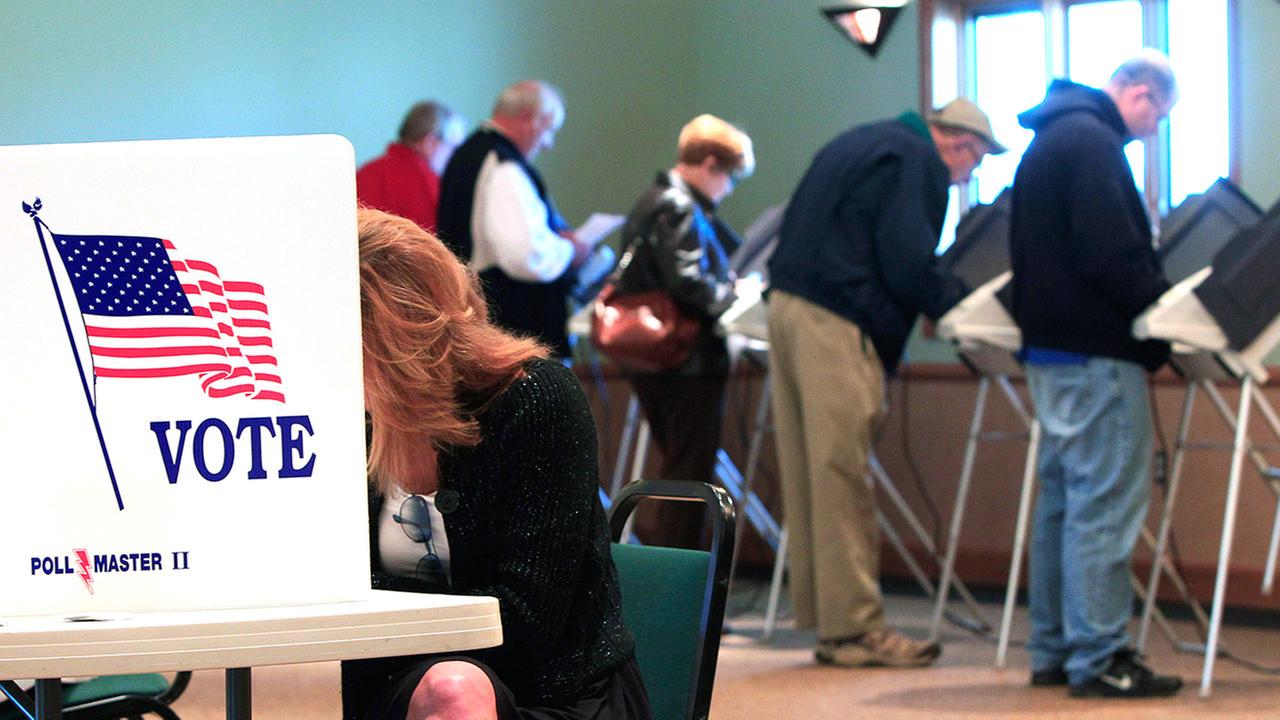
More than a dozen states have enacted tougher requirements for registering and voting since the U.S. Supreme Court overturned a key provision of the Voting Rights Act three years ago. That has led to confusion and claims that certain groups, mostly minorities who tend to vote with Democrats, are being disenfranchised. Adding to the uncertainty is a call by Republican presidential candidate Donald Trump for his supporters to monitor the polls on Tuesday for voter fraud and concerns by the federal government that hackers could try to disrupt the voting or vote-counting process. Here is a breakdown of some of the top voting concerns in key states: ALABAMA This is the first presidential election in Alabama in which voters will be asked for photo identification. A lawsuit challenging the voter ID law is pending, with trial set for next year. The plaintiffs have argued the law disenfranchises voters who are unable to obtain a state-issued ID. Last year, 31 state driver’s license offices – many in poor, minority communities – were closed because of budget concerns. Most were open one day a week and now they are open one to two days a month, with critics complaining the reduced hours remain a barrier. — ARIZONA Long lines led to frustration during Arizona’s March primary, when some voters in the Phoenix area waited hours to cast ballots after county election officials opened 60 polling stations – fewer than half what is typical. On Tuesday, Maricopa County, which includes Phoenix, plans on having more than 700 sites. Meanwhile, state Democrats filed a lawsuit alleging some Republicans are planning to intimidate voters at the polls. Arizona also was one of two states in which hackers over the summer attempted to breach voter registration systems. — FLORIDA During the 2012 presidential election, Florida had the longest average wait time among all states – 45 minutes, according to the Pew Charitable Trusts. Some of the most populous counties have since expanded early voting hours in the hopes of reducing long lines on Election Day. Meanwhile, legal battles continue over voter registration. After Hurricane Matthew raked Florida’s eastern coastline, Democrats sued to extend the deadline for voters to register. After a court order, about 107,000 people registered during the extension, but there was a concern that not all those applications would be processed before early voting began. A federal judge declined a request by Democrats to force election officials to allow those affected to vote even if their registration had yet to be verified, saying those affected could cast a provisional ballot that may be counted once their eligibility is confirmed. — GEORGIA The state’s process for handling voter registrations and maintaining its voter lists has been the subject of lawsuits this year. One pending lawsuit was filed against Secretary of State Brian Kemp over a policy allowing for people to be removed from state voter rolls for failing to vote in recent elections. Lawyers in the Georgia case said roughly 372,000 voters were purged between 2012 and 2014. Civil rights groups also sued Kemp’s office over a policy they said had prevented tens of thousands of residents from registering to vote and violated the federal Voting Rights Act. The policy rejected applicants whose identifying information did not exactly match state or federal databases. Kemp’s office informed the court in September that it had changed the policy. Meanwhile, long lines have been reported in some places since early voting began Oct. 17, including a four-hour wait in one metro Atlanta county on the first day. — INDIANA Indiana State Police have said they are investigating some voter registration applications submitted by Patriot Majority USA, a Washington, D.C.-based voter mobilization group with ties to the Democratic Party. The probe is examining whether some applications contained forged signatures or other possible elements of fraud. Attorneys for Patriot Majority have asked Justice Department’s Civil Rights division to look into whether the investigation is an attempt to suppress the votes of black residents. The group has run voter registration drives in 11 states in previous years. Separately, Secretary of State Connie Lawson, a Republican, warned recently of widespread voter registration fraud after her office found a heavier than usual number of changes to voter registration records. She later tempered those remarks to say that many of the thousands of changes simply could be residents rushing to correct their names or birth dates online ahead of the election. — KANSAS A Kansas court fight focused on whether a group of as many as 50,000 residents could vote because they did not submit citizenship documents, as required under state law, when registering at motor vehicle offices or with a federal form. Federal courts had previously ordered the state to count their votes in federal elections. The secretary of state’s office had sought to toss out their votes in state and local races, something a state judge has since blocked. — NEW YORK The state’s 2016 primary was marred by widespread reports of people in Brooklyn saying they were unable to vote. This happened after about 126,000 Brooklyn voters were removed from voter registration lists or deemed inactive between November 2015 and April of this year. Just days before the presidential election, a lawsuit was filed claiming the New York City Board of Elections had improperly removed voters from the rolls. — NORTH CAROLINA In 2013, Republican lawmakers in North Carolina passed a package of measures that required voters to show photo ID, reduced early voting and eliminated same-day registration during the early voting period. In July, a federal appeals court struck down several parts of the law, saying they “target African Americans with almost surgical precision.” Republican officials have said discrimination was not their intent. A divided U.S. Supreme Court declined in August to take up the case. After the ruling, Democrats raised alarm when the executive director of the state Republican Party emailed GOP activists suggesting each county election board’s Republicans work to limit early voting hours, curtail Sunday voting
Most powerful presidential voters: Where does Alabama rank?
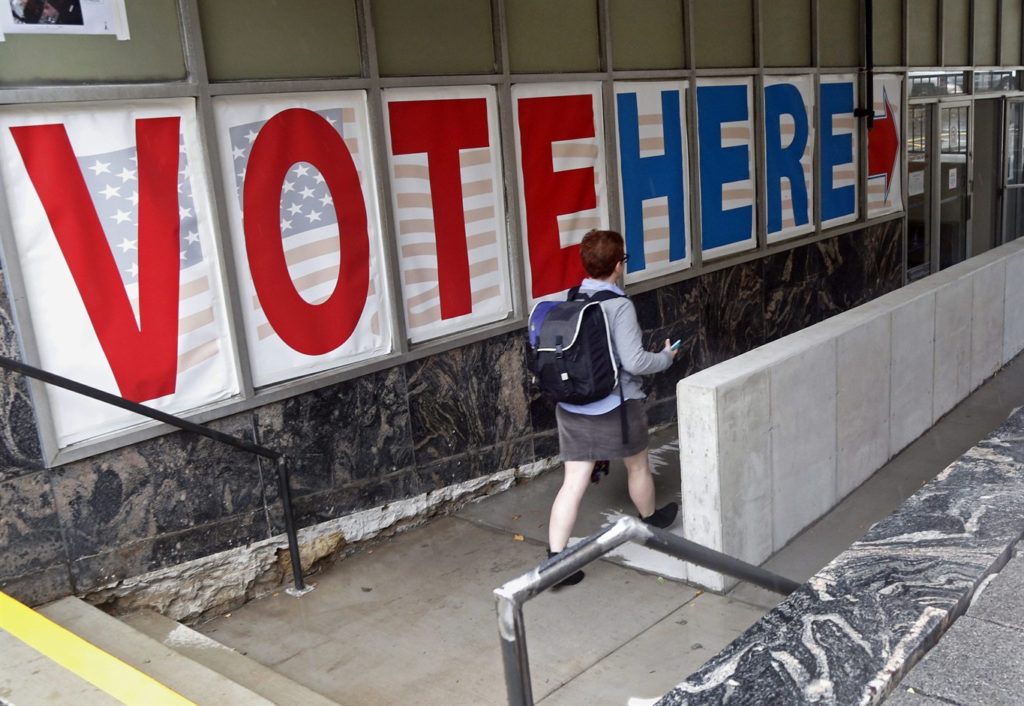
Alabama’s history of one-sided politics makes it one of the country’s least powerful states in presidential elections, a new study claims. That’s according to the personal-finance website WalletHub. With the presidential election just a few weeks away and voters’ influence varying across state lines, WalletHub conducted an in-depth analysis of 2016’s States with the Most & Least Powerful Voters. Their findings? Alabama has the seventh least-powerful voters in the nation. The last time the Yellowhammer State voted for a Democratic candidate was in 1976, for former president Jimmy Carter. Because of this predictability, WalletHub said it’s safe to say the state’s voters aren’t as powerful as those from a swing state. “In a presidential election, voter power varies widely by state. While all votes are theoretically counted equally — one person, one vote — the choices of swing-state citizens are more influential,” WalletHub said. “It’s safe to assume that Alabama will vote Republican and California will vote Democratic in the upcoming election. But the electoral results of swing states are up in the air, giving their voters more impact.” In order to determine the states with the most and least influential voters, WalletHub’s analysts calculated the Voter Power Scores for both presidential and Senate elections in each state. The analysts assessed win probabilities for the candidates in each state on a scale of 0 to 100 — 100 being awarded to swing states with a true 50/50 chance for either major party’s candidate. That number was divided by the state’s 18-plus population, then multiplied by 1 million. “If voting were easier, we might get a more representative sample of the population to vote,” Tracy L. Osborn, assistant professor of political science and director of the Politics and Policy Research Program in the Public Policy Center at the University of Iowa, told WalletHub. “Federal financing of congressional elections would eliminate the need to raise money and likely widen the type of candidates who ran for Congress. Shorter elections might reduce election fatigue in America.” Here’s how Alabama compares to the rest of the country: Source: WalletHub Alabama fares no better in the Senate races either, still ranking the seventh-least powerful state in the country. Here’s how the states compare in the Senate rankings: Source: WalletHub
U.S. agency orders corrective action after gas pipeline spill

Fuel supplies in at least five states are threatened by a gasoline pipeline spill in Alabama, and the U.S. Department of Transportation has ordered the company responsible to take corrective action before the fuel starts flowing again. Colonial Pipeline Co. must conduct testing and analysis on the failed section of the pipeline, according to the department’s Pipeline and Hazardous Materials Safety Agency, which is investigating the spill in rural Alabama. The company has acknowledged that between 252,000 gallons and 336,000 gallons of gasoline leaked from a pipeline near Helena, Alabama, since the spill was first detected Sept. 9. It’s unclear when the spill actually started. The pipeline section that failed runs from Mississippi to Atlanta. The agency said the spill is “within an unusually sensitive ecological area” and it ordered Colonial to take action “to protect the public, property and the environment from potential hazards.” “The department will remain on site to carry out its investigation, and make sure the operator is taking the necessary steps to prevent any future incidents,” agency administrator Marie Therese Dominguez said in a statement. In a statement Saturday, the Alpharetta, Georgia-based company said that repair work had begun in an effort to return the pipeline to service “as rapidly and safely as possible.” The company said it is shipping as much gasoline as possible on its distillate mainline, or Line 2, in order to mitigate the impact of the pipeline that has been shut down. Colonial earlier said most of the leaked gasoline is contained in a retention pond near the city of Helena and there’s no public safety concern. In response to the shutdown, the governors in Alabama, Georgia and Tennessee announced they would lift restrictions on the number of hours that truck drivers delivering fuel can work, in hopes of preventing fuel shortages. Governors can suspend federal transportation regulations during emergencies. A spokeswoman for Alabama Gov. Robert Bentley said Friday that he’s in communication with pipeline company officials along with state and federal officials assisting at the spill location. Georgia Gov. Nathan Deal said he was confident his order lifting restrictions for drivers would help. “We are confident these measures will help ensure Georgians’ uninterrupted access to motor fuel until Alabama’s pipeline is fixed,” Deal said in a statement. Tennessee Gov. Bill Haslam said his order was a precautionary measure. “We are not currently seeing any widespread unavailability of petroleum in Tennessee,” Haslam said in a statement. “We urge Tennesseans to maintain their normal fuel purchasing and driving patterns to help prevent any potential impacts on our fuel supply while the pipeline undergoes repairs.” The U.S. Environmental Protection Agency waived requirements this week that metro areas with air quality issues in Georgia and Tennessee use a cleaner-burning type of gasoline during the summer months. That requirement of the Clean Air Act expired at midnight Thursday. Republished with permission of the Associated Press.
Alabama has one of the fastest growing counties for Hispanics in the U.S., research shows

America’s fastest growing Hispanic populations are not in places one would expect — Florida, California, or Texas. It’s in rural states like Alabama and North Dakota. Alabama’s Russell County had a 92 percent Latino population growth rate between 2007 and 2014, according to a new survey by the Pew Research Center. That makes it fourth in the nation, behind three counties in North Dakota. Russell County is on the eastern border of central Alabama and Georgia, just south of Columbus. Williams County, in northwestern North Dakota, led the pack with a 367 percent increase, followed by Stark County, also in North Dakota, with 294 percent. The Washington Post reports on the study, which shows the largest growth of Hispanic populations in the United States is in a “handful of rural counties far from metropolitan areas dominated by Latinos.” This demographic shift could soon start reshaping the political landscape in mostly rural states; a move Democrats are already beginning to embrace. Acknowledging this population change, Hillary Clinton’s campaign has brought in Hispanic outreach directors for Georgia, Pennsylvania, and North Carolina, making it the first time a presidential campaign has focused its Latino efforts in those areas. Clinton began airing Spanish-language ads this week in Nevada and Florida. Another finding in the study: most Hispanics dispersing throughout the country do not speak Spanish only. As many as 72 percent of Hispanics moving to these fastest-growing counties are identified as “English proficient,” which means they only speak English at home, or speak English along with another language. The national average is 68 percent.
Alabama to get federal grants for communities hit by coal industry layoffs
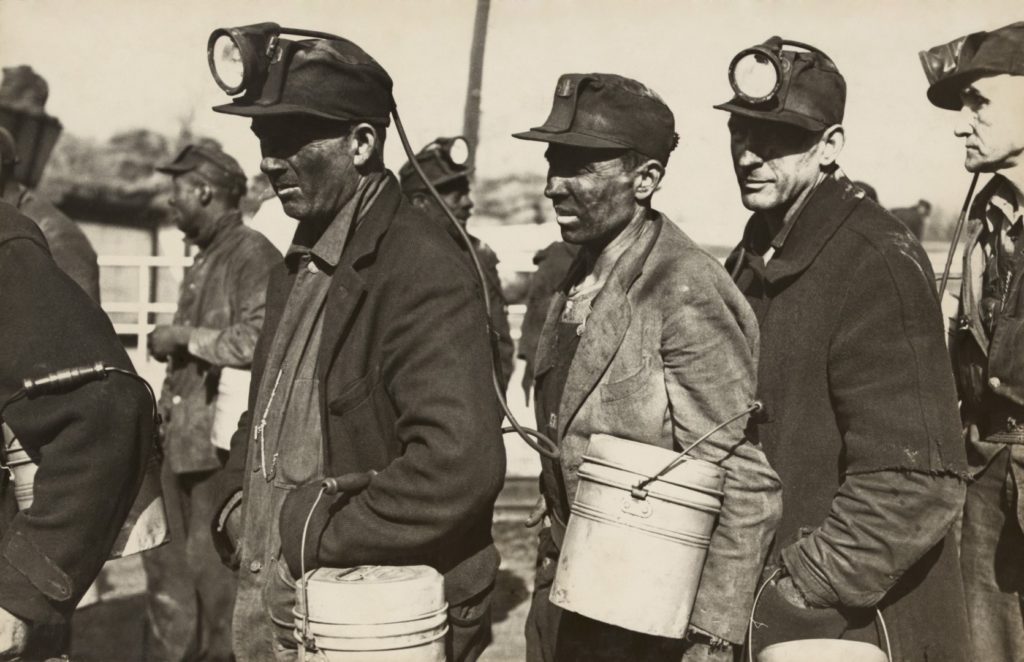
As one of the states hardest hit by coal industry layoffs, Alabama will receive a portion of $39 million in federal grants to help residents get back to work. The Appalachian Regional Commission, the Economic Development Administration and the U.S. Department of Labor announced a series of investments Wednesday for projects supporting coal communities. WBRC reports that Shoals Entrepreneurial Center (SEC) in Florence will receive up to $1 million for an entrepreneurship program serving a nine-county area of Alabama, Mississippi and Tennessee. According to the Shoals Entrepreneurial website, the center is a “business incubator” that works with startups and other up-and-coming businesses — offering space, equipment and resources in a cost-controlled environment. SEC partners with a wide range of organizations, including the USDA Rural Development, the University of North Alabama and Northwest Alabama Council of Local Governments, to provide an economic impact of as much is $98 million in the local economy, generating almost $53 million in sales taxes. Also on the list is the Southern Research Institute in Birmingham, which will receive $60,000 for a study on business development in coal communities. In addition to Alabama, states to receive grant money include Kentucky, Ohio, Pennsylvania, Texas, Virginia, and West Virginia. Some of the money will go to address key issues in the Appalachian coal communities, such as research on opioid abuse and the effects of HIV and hepatitis C, the expansion of broadband internet access for business development, and the effort to get international trade support for coal communities.
Panel sends Alabama chief justice’s ethics case to trial
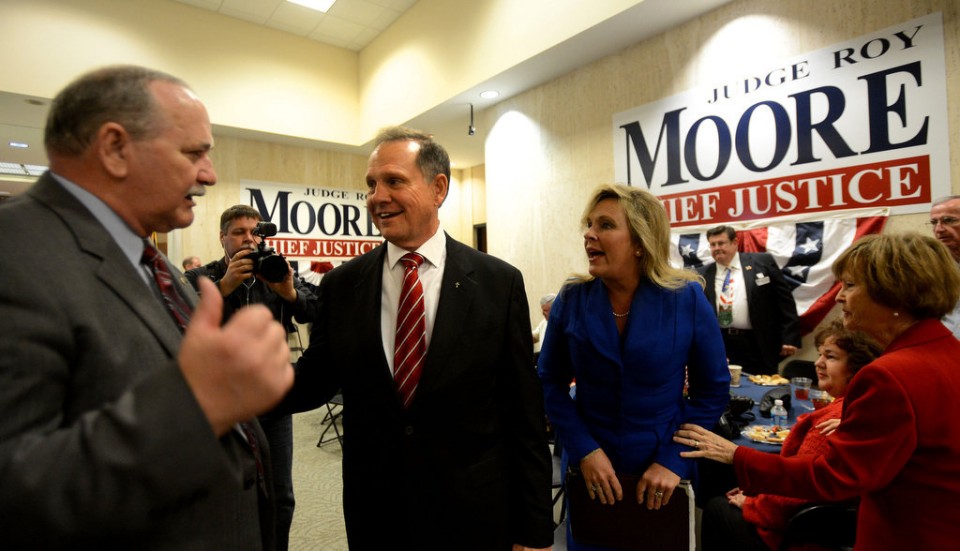
A state judicial panel on Monday refused to dismiss an ethics complaint against Alabama Chief Justice Roy Moore, saying that Moore will go to trial in September on accusations that he urged 68 probate judges to defy the federal courts on same-sex marriage. The Alabama Court of the Judiciary, a state panel that disciplines judges, refused dueling requests to either dismiss the complaint against Moore outright or go ahead and remove him from office. Chief Judge Michael Joiner said the case will go to trial Sept. 28. The panel of nine judges will hear the case and decide whether Moore violated judicial ethics and if so, what punishment he will face. The decision came down shortly after the conclusion of a 60-minute hearing in which Moore was alternately portrayed as a politician on a mission to block gay couples from marrying in Alabama or a judge who was merely trying answer questions from confused probate judges. Moore — who was ousted from office by the court in 2003 for refusing to remove a Ten Commandments monument from the state judicial building — could be removed as chief justice for a second time. “We are here to talk about Chief Justice Roy Moore and his repeated refusal to follow the rule of law,” John Carroll, a former federal magistrate representing the Judicial Inquiry Commission, told the court. Carroll said Moore abused his power as chief justice to promote a private agenda against same-sex marriage. The complaint stems from a Jan. 6 memo he sent probate judges. Moore wrote that a March order from the state Supreme Court to refuse marriage licenses to gay couples remained in full force and effect. The order came even though the U.S. Supreme Court had effectively legalized same-sex marriage nationwide six months prior and a federal judge said Alabama should follow that decision. A lawyer for Moore said the chief justice was only clarifying the status of the state injunction that was issued in March because probate judges were asking questions about it. “The probate judges were flapping in the wind. They were wondering what to do,” his lawyer, Mat Staver, told the court. Moore’s order was merely a legal “truism” that the order had not been lifted by the state court, he argued. Staver, in defending Moore, repeatedly emphasized a section of the January order where Moore told the probate judges that he was not at “liberty to provide any guidance to Alabama probate judges on the effect of (the U.S. Supreme Court ruling) on the existing orders of the Alabama Supreme Court.” Carroll countered that Moore’s intent was clear: to try to urge probate judges to fight against same-sex marriage. Moore acted on his own by sending the order after unsuccessfully urging his fellow justices to take some action regarding the March order in the wake of the U.S. Supreme Court decision, something pointing out by both sides in the hearing. The Monday hearing took on some of the theater and spectacle that accompanied the 2003 dismissal with passionate protests outside the court. Moore’s supporters and opponents held dueling rallies outside the court building ahead of the hearing, at times standing within a few feet of each other as they chanted and waved competing signs such as “No Moore” or “Judge Moore is right.” Moore entered the packed courtroom to applause from his supporters. After the hearing, he spoke to a sign-waving crowd outside, saying there is “no evidence” he broke judicial ethics and that he never told judges what to do. “They said I tried to influence them. I said it’s their decision,” Moore said. Moore said the complaint was filed against him by people who “don’t want anybody opposing any agenda of the homosexual movement.” The Southern Poverty Law Center, a civil rights legal advocacy group, filed the complaint against Moore that led to the ethics charges, and its director said Moore was clearly urging the judges to defy the courts on gay marriage and was now trying to “save his skin by playing word games.” “Alabama is a great state and deserves better than a chief justice who thinks he is above the law. We’ve said it many times. He acts as if he is the ayatollah of Alabama,” SPLC President Richard Cohen said after the hearing. Ambrosia Starling, the stage name of a small-town Alabama drag queen, was among the speakers against Moore. “We lost the war between the states. That means the Supreme Court holds the final authority over jurisdiction of law,” Starling drawled. Linda Chasom drove three hours from Georgia to attend the rally in support of Moore. She said she thought Moore was being persecuted for his conservative Christian beliefs. “My family is being persecuted. Judge Roy Moore is part of my family as a believer,” Chasom said. Republished with permission of the Associated Press.
Federal survey shows Alabama with some of lowest paying jobs in nation

Most Alabama cities have some of the lowest-paying jobs in America, according to a recently released federal survey, though Huntsville, with its rich aerospace sector, is among the nation’s best. The latest U.S. Bureau of Labor Statistics Occupational Employment data, covering wages and salaries in 414 metropolitan areas in the country, finds five Alabama cities rank among the 25 with the lowest pay in the country, according to an analysis by Alabama Today. The bottom tier of metro areas shows pay is generally worst in Mexican-U.S. border towns, with Brownsville, McAllen and Laredo, Texas, having the nation’s lowest, second-lowest and third-lowest wages. Gadsden, with a median pay of $26,800, ranks 10th from the bottom in salaries; Daphne, with median pay of $27,090, ranks 12th; and Auburn, with median pay of $27,550, has the nation’s 15th lowest wages. Dothan and Florence-Muscle Shoals also are in the bottom 25 nationally, while most of Alabama’s seven other metro areas, as defined by the BLS, also are in the nation’s bottom half. The exceptions are Huntsville, ranking among the South’s best-paid cities, 62nd-highest overall nationally, with a median pay of $38,420; and Birmingham, which has a $34,670 median pay, and ranks 159th-best nationally. As a state, Alabama ranks sixth from the bottom nationally in pay rates. Mississippi was lowest at $29,000, followed by Arkansas, West Virginia, South Dakota, South Carolina, and then Alabama, at $31,550. The data are based on the BLS’s annual survey of rates of pay for hundreds of specific professional occupations, ranging from accountants to zoologists, inside 414 employment markets nationwide. The salary review is different from an assessment of workers’ median incomes because the survey does not account for the prospects that many people hold two or more jobs or have other sources of revenue. This is a study of how wages and salaries compare, per occupation, per city. The metropolitan areas with the highest pay are all in the nation’s northeast [the Boston-Washington D.C. corridor] and the Northwest. The San Jose-Sunnyvale-Santa Clara, California, Metropolitan Division, home of Silicon Valley, has the highest annual median pay at $58,900. Nationwide, higher wages are almost exclusively found in bigger metropolitan areas while smaller towns are dominated by relatively lower-paying occupations, and by lower pay across the board. Huntsville has more than 18,000 engineering jobs of various kinds, the city’s third-most-common broad job category, with a combined median pay of nearly $99,000. Another 12,000 computer-related jobs have a combined median salary of over $88,000. Between them, those two professions make up almost 15 percent of Huntsville’s 213,310 jobs, according to the BLS. By contrast, Gadsden, with a much smaller employment market, 35,570 jobs overall, is dominated by more than 11,000 factory and office jobs with a combined median pay of a little more than $25,000 a year. There are 3,220 health care jobs with a median pay of $46,840, but not many that pay much more, and none that competes with the salary ranges in Huntsville.
U.S. Supreme Court to rule on use of race in redistricting
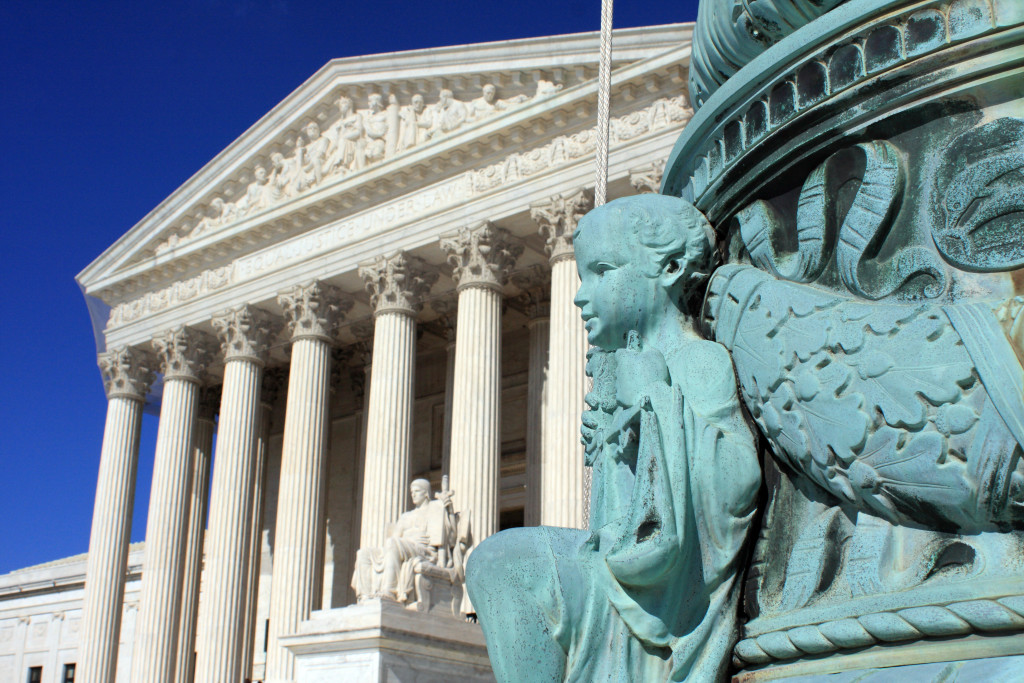
The U.S. Supreme Court agreed Monday to decide whether Republican lawmakers relied too heavily on race when they redrew North Carolina’s congressional districts to give the GOP a powerful advantage in the swing state. The justices will hear the case in the fall — almost certainly too late to affect November’s elections. But in the years ahead, it could impact partisan efforts to create electoral districts aimed at swaying the balance of power in Congress and in state legislatures. The Supreme Court could consider it together with a similar appeal from Virginia, where challengers say Republicans packed black voters into a dozen statehouse districts, strengthening GOP control of neighboring territories. Five of the eight current justices appear sympathetic to such claims brought by minority voters, based on a 2015 ruling in an Alabama case, according to election-law expert Rick Hasen at the University of California at Irvine. North Carolina’s GOP leaders deny factoring in race to an illegal extent, saying their 2011 map was designed primarily to give Republicans an edge while complying with the federal Voting Rights Act after the 2010 census. “We continue to believe the maps are fair, legal and constitutional and look forward to our day in court,” state Sen. Bob Rucho, a chief architect of the maps, said Monday. Opponents say they unfairly stacked black voters into two districts that were already electing African-American representatives, thus diluting their influence in neighboring territories. A federal court ruled in February that race was the predominant factor in drawing the two districts and ordered them redrawn. A new map of 13 congressional districts was used in an unusual June 7 primary, separate from most other races. A high court ruling also should influence a separate court challenge of North Carolina’s state legislative districts. North Carolina is a swing state whose voters split almost evenly in the last two presidential elections. But the GOP’s maps created veto-proof majorities in the state legislature, and the congressional delegation now has 3 Democrats to 10 Republicans. The latest court-ordered map essentially created a new district without an incumbent, but the Republican-leaning territory is expected to help the GOP maintain this 10-3 edge. It also upended the former territories of two Republican members of Congress, pitting them against each other in the primary. State Rep. George Holding beat state Rep. Renee Ellmers after groups including the Club for Growth and Americans for Prosperity funded ads questioning her conservative credentials. Holding is expected to beat a Democrat in November. The state’s lawyers, meanwhile, say the federal court’s logic forces North Carolina into the difficult situation of having to consider race to comply with federal voting rights laws, while also triggering “strict scrutiny” of its maps for doing so. “The three-judge court’s approach would trap states between the threat of vote dilution claims and the hammer of a racial gerrymandering claim,” they wrote in a Supreme Court filing. Their challengers argue that GOP mapmakers illegally gerrymandered the 2011 map, drawing boundaries “whose grasping tendrils were necessary to capture disparate pockets of black voters.” The case is McCrory v. Harris, 15-1262. Republished with the permission of The Associated Press.
As Florida votes, there’s a difference between north, south
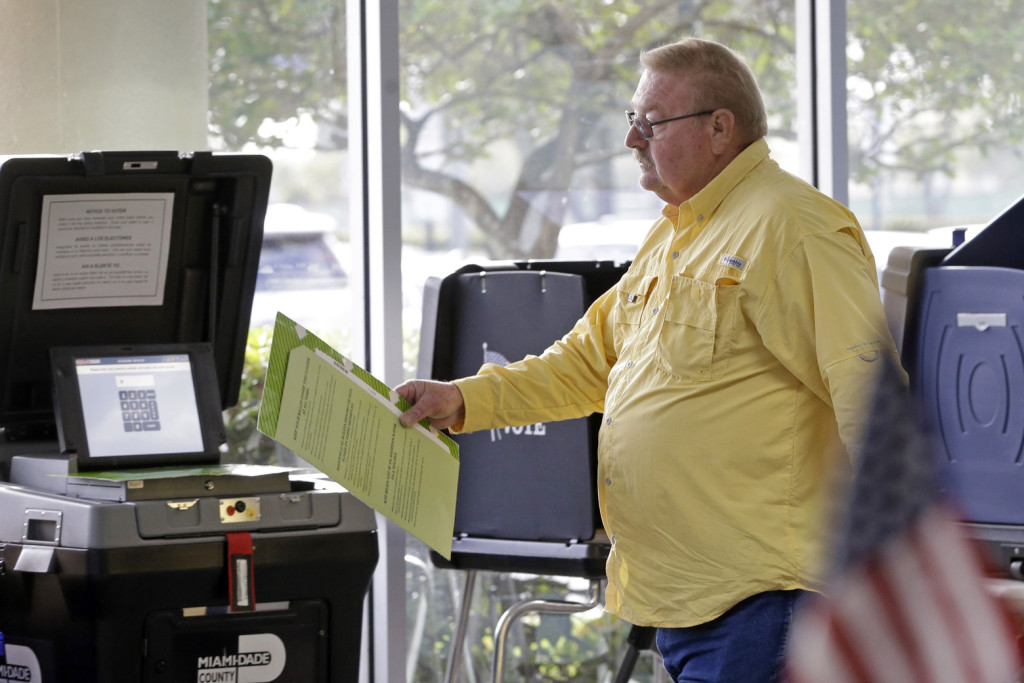
There’s a big difference between north Florida and South Florida. As different as Alabama and New England. And on Tuesday, those distinctions will likely play out as Florida voters decide who to give 99 Republican delegates to in the race for president. The Florida GOP primary is considered a pivotal moment in the campaign: The winner-takes-all contest could mean a huge boost for Donald Trump, or the death of Marco Rubio‘s campaign in his home state. But the Florida primary isn’t easy to predict. The differences between residents in Bonifay in north Florida and those in Broward County in south Florida are about as stark as voters in Birmingham, Alabama, with those in Boston, Massachusetts. In Bonifay in Holmes County in the north, there’s a sign pointing to a bait shop three miles down the road intermingled with campaign signs for sheriff, school superintendent and property appraiser. They don’t like Democrats even if they are Democrats (because they are Dixiecrats). Nobody blinks if a Confederate battle flag waves in front of a home and people driving off Interstate 10 might think they’re in Alabama, which borders the largely rural community. A day’s drive south is Broward County. Broward is a place where it can take hours to get off Interstate 95 during rush hour, people speak with New York accents and President Barack Obama won enough support to cancel out dozens of places like Bonifay to carry Florida and win two terms as president. In north Florida, boiled peanuts are commonplace. In South Florida, you’re more likely to find boiled yucca, a staple in Cuban restaurants. And on Tuesday, when Florida awards 99 delegates to either Donald Trump, favorite son Sen. Marco Rubio or, much more unlikely, Sen. Ted Cruz or Ohio Gov. John Kasich, there’s a good chance there will be a difference in who north Florida supports and who prevails in the three-county area known as South Florida. “We’re more in line with south Alabama, frankly, than we are below the I-4 corridor,” Dan Smith, chairman of the Holmes County Republican Party, said about the highway that divides Florida in half from Tampa to Daytona Beach. “It comes from our roots. Conservative values and family values.” Holmes County in the north, which includes Bonifay, actually has more Democrats than Republicans, but many are Dixiecrats — Southerners who register as Democrats but vote Republican. Despite the party advantage, Barack Obama earned only 15.2 percent of the vote in 2012. Smith takes pride in saying Holmes County gave more support to Marco Rubio’s 2010 Senate campaign than any other Florida county. But this year, he said the vote in the Republican primary will be close. He agrees that the primary results in Georgia and Alabama, which Trump easily won, could indicate the businessman and reality TV star will do well in north Florida. Exactly why a New Yorker is winning the hearts of Southern voters is something of a mystery. “You’ve got me there,” Smith said. “It’s like a Trump phenomenon.” Rubio will probably do better in South Florida, the state’s most populous region, with more than 800,000 Republicans in Palm Beach, Broward and Miami-Dade Counties. Rubio is from Miami, where the population in his home county outnumbers Holmes by a better than 131-to-1 ratio. Even throw in conservative strongholds like Jacksonville and Pensacola and South Florida votes dominate the state, and tend to be a bit more liberal even among Republicans. Maria Penton-Oliver, of Davie, a city southwest of Fort Lauderdale in Broward County, has already voted for Rubio. She’s no fan of Trump. She said she has “100 reasons” not to vote for the billionaire. She thinks Trump speaks “from both sides of his mouth,” saying that the billionaire businessman talks tough about immigration but takes advantage of the H1-B program to hire foreign workers at his Mar-A-Lago resort in nearby Palm Beach County. “I don’t think he understands our country,” she said. “I do not think he’s an honest man. And I think, like Rubio says, he’s a con artist.” Not that Rubio won’t get any support up north. Jerre Richter stood on her porch in Bonifay and said she’s voting for him because she thinks that’s who God would think makes the best president. She said her faith plays a large part in casting her vote. But the 83-year-old former teacher and current pastor said there are plenty of others willing to cancel out her vote. “Somebody said to me the other day, ‘Who are you voting for?’ And I said my current plan was to vote for Rubio. And they said some junk about him not being from the United States. I don’t remember the term they used, but like he was a foreigner. I said, ‘What difference does that make? It’s more the man, what he stands for, what he is and what’s he going to do,’” Richter said. She said one neighbor pleaded with her: “‘You must be for Trump! You must be for Trump!’ She was talking like he was God sent to resurrect the nation.” Republished with permission of the Associated Press.

